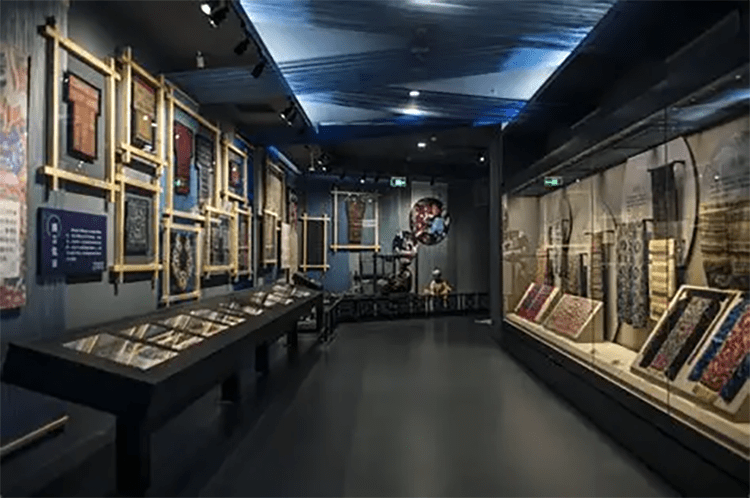Traditional Embroidery at Guizhou Ethnic Museum: Complete Visitor’s Guide
Guizhou Ethnic Museum: Complete Visitor’s Guide
Introduction:
When the upturned eaves of a Dong drum tower slice across Guiyang’s skyline, a modern building patterned in vivid ethnic motifs tells the living epics of Guizhou’s mountain peoples. The Guizhou Ethnic Museum is like a three-dimensional “Hundred Miao Scroll,” reviving reed-pipe melodies, drum rhythms, and Buyei batik through 40,000 handcrafted garments, tinkling silver, and exuberant embroidery. It’s both a field site for anthropologists and a vivid classroom for travelers seeking China’s multicultural heart.
1. Ethnic Culture’s Genetic Archive: Museum Focus and Architectural Code
As the largest minority-focused museum in southwest China, the museum practices “living conservation,” concentrating the cultural codes of 18 long-resident Guizhou ethnic groups—Miao, Buyei, Dong, and others. The building is an exhibit itself: diamond motifs on the façade derive from Dong brocade, the main structure echoes the tiered form of a drum tower, and the covered walkway at the entrance mimics the wind-and-rain bridges of southeastern Guizhou. Designated a National First-Class Museum in 2015, it also serves as an important research base for UNESCO intangible cultural heritage projects.
2. Treasures on Display: Wearable Epics
• Miao “Hundred-Bird” Broken-Thread Embroidery (3rd Floor Costume Hall):
This Qing-dynasty bridal ensemble uses silk threads split to 0.2 mm and braided into 64 strands for the painstaking broken-line embroidery. It took a single embroiderer ten years to complete; motifs of golden pheasants and butterflies allude to Miao creation myths, and the sewn silver pieces rain a soft chime when the bride dances.
• Dong Gilded-Silver Carved Saddle (2nd Floor Life Hall):
A Ming-dynasty chieftain’s saddle featuring openwork “two dragons playing with a pearl” and a lost gilding technique known as “fire-pit gilding.” Each foliate scroll motif corresponds to geographic-direction codes embedded in ancient Dong songs.
• Shui “Oracle-Bone” Horsehair Embroidered Strap (4th Floor Special Exhibition):
Embroidered with white horsehair, this panel of ancient glyph-like spirals has been called an “embroidery living fossil.” Its patterns closely resemble Shang-dynasty bronze motifs from Anyang, hinting at long-distance migration routes for this mysterious group.
3. Immersive Visits: From Batik Workshops to Virtual Duets
The permanent exhibition “Colorful Guizhou” is organized around mountain-civilization themes in three major sections: “Robes and Ornaments” (costumes), “Pipes and Drums” (musical instruments), and “Slash-and-Burn Life” (production). In the interactive zone, visitors can:
– Use AR gear to “try on” an 8-kg Leishan Miao silver crown
– Experience rice-pounding tools in a reconstructed Dong granary
– Join a holographic duet of Buyei “June Six” love songs

4. Local Insider Tips
• Light-and-Shadow Photo Moment: At 3:00 PM the western sun filters through a perforated copper-drum patterned screen, casting moving spots of light on the exhibition floor—an excellent photo spot (2nd floor east corridor).
• Hidden Easter Egg: The 4th-floor “Intangible Heritage Practitioners’ Studio” occasionally opens for live demonstrations; you may catch an embroiderer performing the rare “double-needle locking stitch” (usually Wednesday mornings).
5. Practical Information
⏰ Opening Hours: 9:00–17:00 (last entry 16:30). Closed Mondays except public holidays.
🎫 Tickets: Free (special exhibitions charge 30 RMB). Exchange passport for a ticket at the service desk.
🚇 Transport: Metro Line 1, HeBin Park Station (Exit A), 8-minute walk; or Bus 6/18 to “Minzu Wenhua Gong” stop.
📱 Services:
– English audio guide (20 RMB per device), including a children’s narration
– Official WeChat account “QianMinBo” offers bilingual guided tours (reserve 24 hours in advance)
⚠️ Notes:
– Selfie sticks are prohibited in the silver jewelry gallery on the 2nd floor
– Miao ancient-song performance every Saturday at 10:00 (canceled in rain)

6. Nearby Cultural Circuits
Half-Day Culture Loop: Museum → (12-minute walk) → Jiaxiu Tower (Ming-era architecture) → (8-minute taxi) → Qingyun Road Night Market (try siwawa rice rolls, sour soup fish).
Full-Day Deep Dive: Morning at the museum → Afternoon in Qingyan Ancient Town (Miao batik workshops) → Evening “Colorful Guizhou” ethnic song-and-dance show.
Conclusion:
In Guizhou’s archipelago of cultures, communities stitch history into cloth and sing epics in silver tones. When you trace the raised resin dye motifs on Dong cloth or gaze at a Miao ceremonial robe studded like a sky of stars, you’ll hear more than the jingle of ornaments—you’ll feel a living civilization. This museum is the brightest key to Guizhou’s hidden world.


